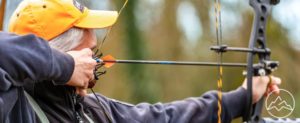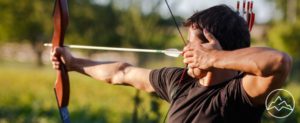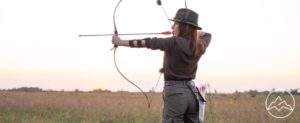Mastering Precision: The Art of Cutting Carbon Arrows
In the world of archery, achieving optimal performance and accuracy is of utmost importance. Carbon arrows have become the go-to choice for many archers due to their exceptional strength, lightweight nature, and excellent flight characteristics. However, these arrows often come in longer lengths and need to be cut to fit an individual’s draw length. The process of cutting arrows is not just a matter of aesthetics; it directly impacts the arrow’s performance and consistency.
Arrow length plays a crucial role in determining the arrow’s spine, and arrows that are either too long or too short can result in accuracy issues. To ensure the best possible performance, archers must master the art of cutting carbon arrows. This article will delve into the technicalities of this skill, providing detailed instructions and guidance for archers to follow.
To successfully cut carbon arrows, certain tools are required, including an arrow saw, ruler or tape measure, vice clamp, sandpaper, and safety gear. It is imperative to secure the arrow with a vice clamp before initiating the cutting process and to prioritize safety by wearing appropriate gear throughout. After cutting, sanding the ends of the arrows becomes essential, followed by gluing inserts to accommodate different arrow tips.
Learning to cut your own carbon arrows not only saves money but also enhances accuracy, making it a valuable skill for archers to master. Through this article, archers will gain a deeper understanding of the technique and precision required to achieve optimal arrow performance.
Key Takeaways
- Cutting carbon arrows is essential for performance and accuracy.
- Arrow length should be slightly longer than draw length.
- Consistency in cutting arrows is important for performance.
- Cutting your own arrows can save money and improve accuracy.
Arrow Length and Spine
Arrow length is a critical factor in determining the spine of the arrow, which in turn affects its performance and accuracy. Arrow length measurement is essential to ensure optimal performance and consistency. The length of an arrow is typically measured from the nock point to the grip throat. It is important to note that the arrow length should be slightly longer than the draw length to accommodate for proper clearance and release. The spine of an arrow refers to its stiffness, and it is influenced by the length of the arrow. Arrows that are too long or too short can lead to accuracy issues and affect the arrow’s flight characteristics. Therefore, it is crucial to carefully consider arrow length when cutting carbon arrows to achieve the desired spine and optimize performance.
When properly sized, carbon arrows can greatly enhance performance and accuracy in archery due to their lightweight composition and ability to fly smoothly. Arrow cutting techniques play a crucial role in optimizing arrow performance, and one important factor to consider is arrow length. The length of an arrow affects its spine, which in turn affects its flight characteristics. Arrows that are too long or too short can lead to accuracy issues and inconsistent performance. It is recommended to measure the ideal arrow length from the nock point to the grip throat, ensuring that it is slightly longer than the draw length. Cutting the arrow to the correct length is essential for achieving better performance and consistency. By understanding and implementing proper arrow cutting techniques, archers can maximize the potential of their carbon arrows and improve their overall shooting experience.
The length of an arrow is a critical factor to consider in order to achieve optimal performance and consistency in archery. Arrow length measurement techniques play a crucial role in determining the appropriate length for an arrow. The ideal arrow length can be measured from the nock point to the grip throat, and it should be slightly longer than the draw length. Double-checking measurements is essential before cutting the arrows to ensure accuracy. Arrow cutting techniques involve securing the arrow with a clamp and using an arrow saw to make precise cuts. It is important to cut slowly and sand the cut ends afterward. Consistency in cutting arrows is crucial for performance. By mastering arrow length measurement and cutting techniques, archers can ensure their arrows are tailored to their personal draw length, leading to improved accuracy and overall performance in archery.
Frequently Asked Questions
What is the ideal front of center (FOC) percentage for carbon arrows?
The ideal front of center (FOC) percentage for carbon arrows depends on various factors. These include arrow length, weight distribution, and individual shooting style. A higher FOC percentage, achieved by increasing the weight in the front of the arrow, can provide benefits in hunting. It improves arrow stability, penetration, and accuracy, especially when using broadheads. Additionally, it can enhance the kinetic energy transfer upon impact, resulting in more effective kills. Understanding and optimizing FOC percentage is crucial for achieving precision in archery and hunting.
How can I determine the correct arrow length for my draw length?
Determining the correct arrow length for your draw length can greatly impact your archery performance. Several techniques can be used to measure arrow length accurately. One method is to measure from the nock point to the grip throat, ensuring that the arrow length is slightly longer than your draw length. Another technique involves utilizing a bow with a draw length indicator to measure the arrow length required. By employing precise measurement techniques, you can ensure that your arrows are cut to the appropriate length for optimal accuracy and consistency in your shots.
Can I use any type of glue or epoxy to secure inserts in carbon arrows?
To secure inserts in carbon arrows, it is important to use the appropriate type of glue or epoxy. Hot glue or epoxy can be used for this purpose, as they provide a strong bond. However, it is crucial to avoid common mistakes when gluing inserts in carbon arrows. These include using too much glue or epoxy, not properly cleaning the arrow shaft before applying the adhesive, and not allowing enough time for the glue or epoxy to dry. Following the correct gluing process will ensure a secure and durable attachment of the inserts.
Is it necessary to sand the ends of carbon arrows before gluing in inserts?
Sanding the ends of carbon arrows before gluing in inserts is a crucial step in the proper arrow insertion technique. The sanding technique for carbon arrows involves using sandpaper to smooth the cut ends of the arrows. This process helps to create a clean and rough surface, which allows for better adhesion between the arrow and the insert. By sanding the ends, any uneven edges or imperfections are removed, ensuring a secure and reliable bond between the arrow and the insert.
Are there any specific safety precautions I should take when cutting carbon arrows?
When cutting carbon arrows, it is important to follow best practices for carbon arrow cutting safety. Firstly, always wear appropriate safety gear, such as goggles and gloves, to protect yourself from any potential accidents. Secondly, securely clamp the arrow in place before cutting to ensure stability. Additionally, it is recommended to cut slowly and carefully, paying attention to aligning the saw disc with the measurement mark on the arrow. Finally, after cutting, sand the ends of the arrows to prevent any sharp edges.
Conclusion
In conclusion, mastering the art of cutting carbon arrows is essential for archers seeking optimal performance and accuracy in their sport. By cutting arrows to the correct length, individuals can ensure better consistency and flight characteristics. The length of the arrow also affects its spine, making it crucial to achieve the right measurements. With the right tools and safety precautions in place, archers can save money and enhance their accuracy by cutting their own arrows. This valuable skill is a must-have for any serious archer, allowing them to take their performance to new heights.












